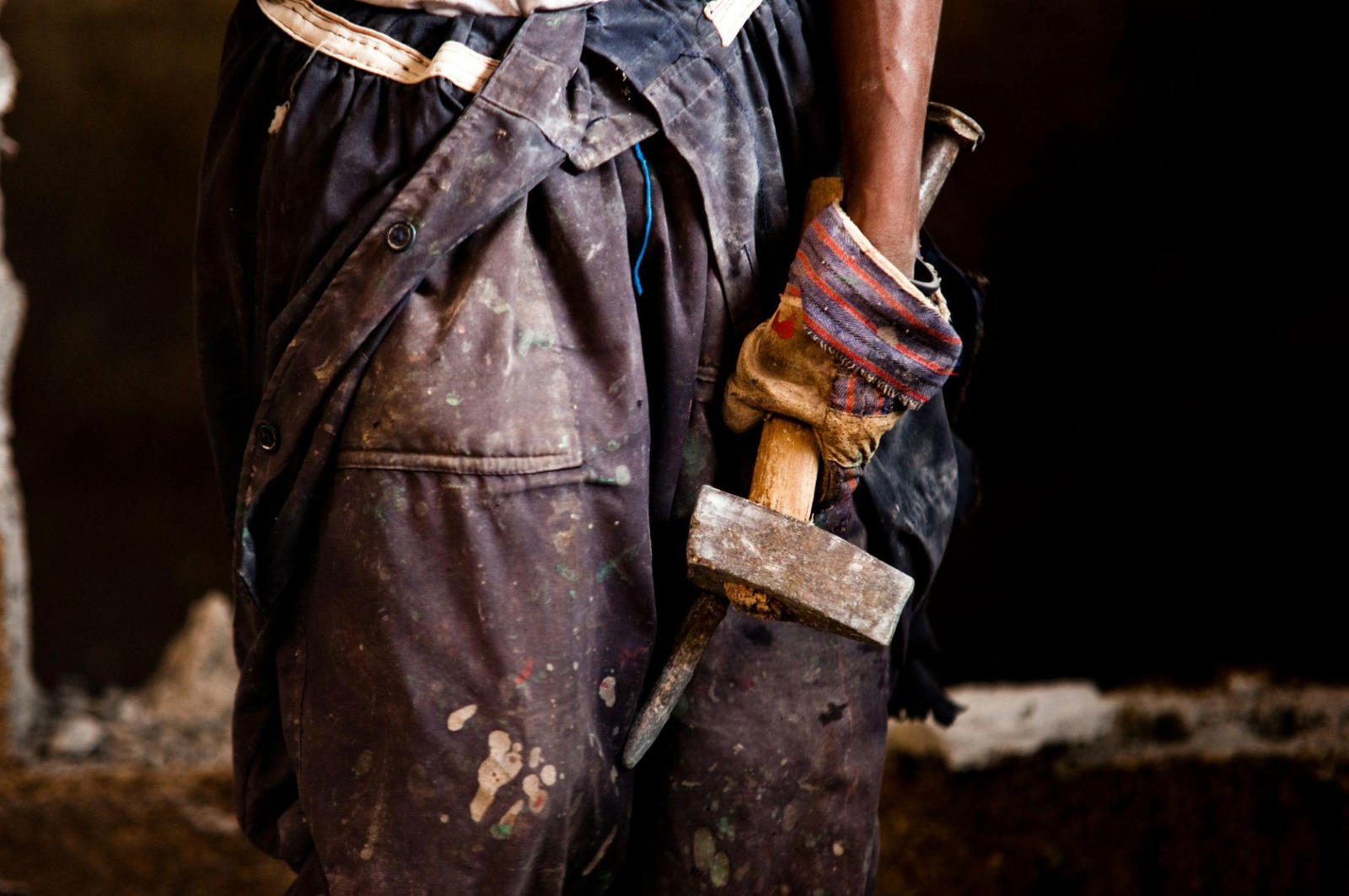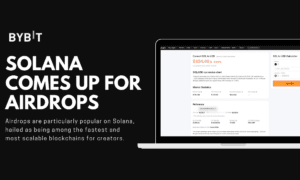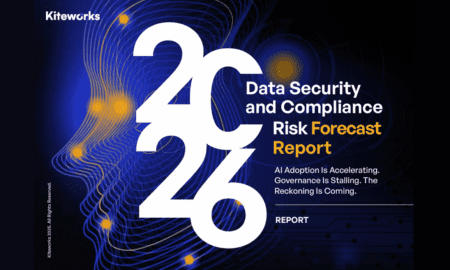Photo by Lucio Patone on Unsplash
Kwezi, a 17-year-old miner in Kolwezi, DRC, carries a sack of cobalt ore to a middleman’s shed. His hands are rough, and his shirt is soaked with sweat. The négociant, a local buyer with a ledger full of lies, claims the sack weighs half what Kwezi knows it does and offers $2 per kilo, far below the global rate. No receipt, no argument. There’s no digital trail to contest the deal. In the Democratic Republic of Congo’s artisanal pits, “conflict-free” promises constantly collapse at the point of sale: kids in dangerous work, water sources fouled by runoff, and miners squeezed by intermediaries who set terms few can challenge.
The DRC produced an estimated 76% of the world’s mined cobalt in 2024, the lifeblood of electric vehicle batteries and smartphones. Much of the sector is industrial, but hundreds of thousands of people still depend on artisanal and small-scale mining (ASM). Around 40,000 children, some as young as seven, struggle in unsafe conditions. The numbers are older and hard to update, but the risk persists. Middlemen manipulate prices, demand bribes, or falsify weights, pocketing profits while miners like Kwezi earn just a few dollars a day.
The problem isn’t just extraction. It’s proof. How do you verify ethical sourcing when transactions happen in cash, off-grid, with no digital trail?
Why “Conflict-Free” Labels Fail
Paper-based certifications are vulnerable to forgery and hard to verify on the ground. Audits are periodic, usually annual at smelters/refiners, leaving long stretches without mine-site visibility. Buyers in Europe or Asia rarely have live data on whether a shipment involved child labour or pollution. The “last mile” from mine to market is still a blind spot.
Even well-intentioned initiatives struggle with verification. The Responsible Minerals Assurance Process (RMAP) validates practices at the smelter/refiner “pinch point,” far downstream from mine sites; by the time cobalt reaches a certified facility, origin can be obscured by intermediaries and mixing.
Bag-and-tag traceability systems for 3T minerals (tin, tantalum, tungsten) show both the promise and limits of analog controls: tags follow lots from mine to smelter, but leakage and fraud have been documented where oversight is sporadic or paper-based. (Cobalt uses different schemes, but the lesson holds.)
In cobalt, RCS Global’s Better Mining brings continuous incident monitoring and corrective actions to ASM sites, useful for risk visibility, but not a full proof of origin or real-time compliance by itself.
The négociants who control artisanal mining sites exploit this mess. They manipulate weights, falsify grades, and pocket the majority of value while maintaining plausible deniability about working conditions. Miners like Kwezi remain invisible to global buyers, creating perfect conditions for exploitation.
Blockchain’s Promise: Making the Invisible Visible
A better approach is to make verification continuous and tamper-resistant. Blockchain can log time-stamped, geo-tagged data at the pit: miner ID, cooperative status, safety checks, and custody transfers, so every handoff creates an immutable trail. When combined with mobile apps, biometrics and IoT, incentives (bonus payments, pre-financing) can be tied to verified compliance, letting value flow back to legitimate miners instead of getting trapped with intermediaries.
Imagine if every sack of cobalt gets a GPS tag and timestamp at the mine, logged on a tamper-proof ledger. Miners like Kwezi carry digital IDs that verify legal age and cooperative membership. Smart contracts release payments only when child-labour-exclusion and safety conditions are met. Buyers scan a QR code to see the journey from pit to port.
Proof points (and limits)
In cobalt, the Re|Source consortium tested end-to-end traceability across the DRC–EU chain, with Tesla among participants, a pilot that demonstrated feasibility across mining, refining and cell manufacturing.
In diamonds, Tracr (De Beers) runs at scale, recording provenance from mine to market on a permissioned blockchain, evidence that industrial-grade traceability can be done for high-value commodities
Both cases prove traceability can work at scale, neither, on its own, makes sure that labour and safety conditions were compliant at the time of extraction. So what’s missing? These systems prove where material moved. Closing the “last mile” also requires tying money to verified labour and safety conditions, and making that work in places with poor connectivity.
Beyond tracking: fixing system incentives
Getting data on-chain is only half the job, the other half is wiring money to verified behaviour at the pit, offline-first. Digital payouts (including USSD) can cut cash leakage and pay compliant miners directly. In Papua New Guinea, Fedrok, a Swiss blockchain project, and Howarig Traders’ T4G Pay builds mobile/USSD rails with smart-contract revenue sharing (for example, 35–45% of net carbon-credit proceeds to landowners). The same structure can route bonuses or pre-financing only when verified checks pass, exactly what cobalt’s last mile needs.
Building fair payment systems that work without constant connectivity matters. Dollar-pegged stablecoins reduce exposure to local currency swings, and wallet rails that run on basic phones matter more than bank branches. In DRC, only about 27% of adults had an account in 2021 (bank or mobile money), so cash still dominates, another reason to meet people where they are with USSD/agent models.
Compliance also travels on identity. Verified digital IDs tied to legal-age documents help prevent child hiring and wage theft. The same last-mile verification problem exists in cocoa, palm and timber. In Ghana, FarmRight and Fedrok use palm-vein biometrics and on-chain records so farms can prove no child labour at hiring and again at payroll: age-verified contracts, training/safety logs, and third-party inspection results are written to a ledger that buyers and regulators can query through a permissioned dashboard/API. In parallel, Fedrok’s partnership with X-Telcom brings the same palm-vein toolkit for secure KYC/AML, useful for miner onboarding and age verification before any payment flows.
Access to tools and credit should follow the same logic. Smart-contract terms can tie advance payments or equipment leases to verified compliance (age, safety, custody) and automate repayments from sales, so upgrades don’t depend on informal credit.
When legal-age IDs, safe-work confirmations and custody handoffs are captured at the gate, and payouts trigger only when those checks pass, “conflict-free” stops being a label and becomes a verifiable, continuously enforced state.
The Reality Check: Barriers Remain
But blockchain isn’t a magic fix. Most DRC miners don’t have smartphones or steady internet, internet penetration stood at only 30.6% in 2025, per DataReportal data. Political chaos and entrenched corruption could sabotage transparent registries or DAOs, as local power brokers cling to control.
Governance is tricky: who sets the rules for the blockchain, and how do you enforce them in a region where bribes and intimidation are common? Without careful design, tech could exclude the poorest miners, deepening inequality. Scaling blockchain in the DRC needs investment in connectivity, training, and local oversight.
Technical architecture matters greatly. Poorly designed systems could embed existing inequalities or create new forms of digital exclusion. Data ownership and platform governance questions remain unresolved.
Market reality. Artisanal cobalt’s share has shrunk, the Cobalt Institute estimates it was under 2% of DRC production (≈1% of global) in 2024, which reduces tonnage exposure but not human-rights risk where ASM persists. Formalization pilots like Mutoshi showed progress before suspending in 2020, underscoring how governance and market shocks can derail well-designed schemes.
Beyond Cobalt: A Broader Template
Blockchain works best by augmenting, not replacing, existing verification and enforcement. It should sit alongside site monitoring, government oversight, and buyer due diligence.
Success also depends on formalization: cooperative development, miner education, alternative livelihoods, and better access to healthcare and schooling. These are the levers that address the root causes pushing families like Kwezi’s toward child labour in the first place.
The same verification challenges exist beyond cobalt. Palm oil, cocoa, timber and other commodities face gaps where “conflict-free” labels can mask exploitation. Systems designed for one supply chain can become templates for broader transparency.
For now, the verification gap remains wide. But when Kwezi’s younger siblings come of age, their choice between school and mine work could be shaped by an economy that finally rewards verified ethical practices over exploitation. Bottom line: the problem isn’t only extraction, it’s proof. When miner identity, site conditions, and custody transfers are captured at the pit and tied to payments, “conflict-free” stops being a label and becomes a verifiable state. That’s the last mile.



































